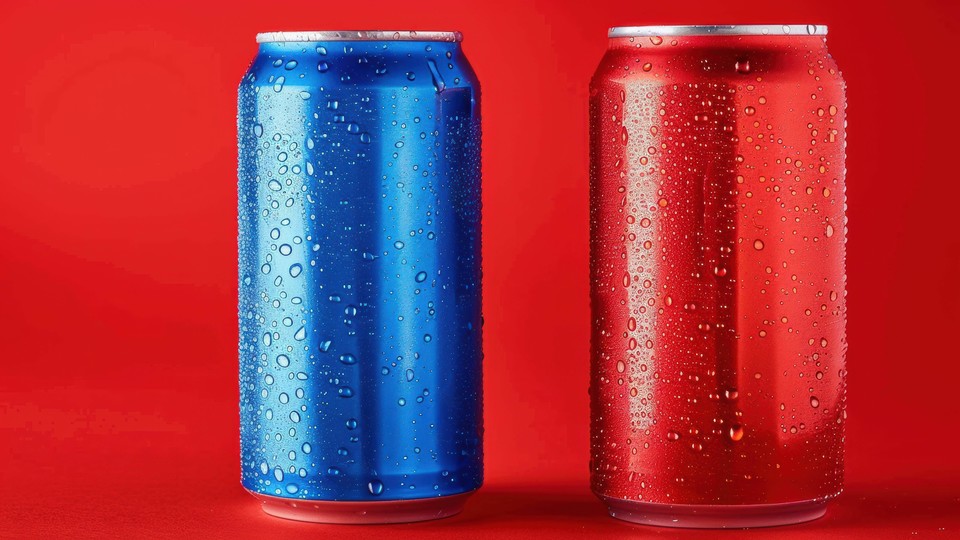The Survey Effect
Customers who complete surveys are more likely to buy the same product or service again.


Based on research by Utpal Dholakia, Robert A. Westbrook and Siddharth S. Singh
Customers who complete surveys are more likely to buy the same product or service again.
- Surveys do more than record data about customer opinions. They can also work as marketing tools to sway future behavior.
- Regardless of how they originally felt about a product or service, customers who fill out satisfaction surveys are less likely to buy the same product or service in the short run than customers who haven’t taken a survey.
- In the medium and long runs, though, the customers who complete surveys are more likely to buy the same product or service again.
Maybe you’re wiggling your toes in the sand by your Maui hotel. Perhaps you’re buying a new app for your phone. Or possibly you’re just getting your oil changed at an auto repair chain. Almost inevitably, you’ll soon get a customer satisfaction survey asking you to rate whatever it was that you paid for.
These surveys all share a secret. While your hotel or mechanic is mainly interested in your feedback, the very act of taking a customer satisfaction survey also influences how you feel about a product or service — and the degree to which you will continue using it. Surveys, in other words, not only help companies improve their goods and services. They also have a little-known effect as marketing tools.
The human dynamic that surveys set in motion is called question-behavior effect, or QBE. If you answer positively in a survey, research shows, your answers do more than simply reflect your views. They also influence how you will feel about that company or product in the future. Nobody knows for sure why QBE happens. It’s clear, though, that simply by answering surveys, customers not only provide information about their past experience with a product, but also predict their future relationship with it.
Rice Business professors Utpal M. Dholakia and Robert A. Westbrook joined Siddharth S. Singh of the Indian School of Business to lift the veil from this question-behavior effect over the passage of the time. Do specific responses, they wondered, predict specific customer behavior over the long term? Do positive responses accelerate future purchases? Delay them? Do nothing?
Existing research on QBE offered the researchers a jumping off point. According to some studies, the satisfaction of writing a positive survey response creates a desire to buy more of a product. According to other research, taking part in surveys helps consumers tap into their own previously unexamined intentions. Once accessed, these wishes push them to buy again.
Dholakia, Westbrook and Singh wanted to test whether survey experiences affect customers over weeks and months. After all, if a purchased product leaves a consumer satisfied, presumably she won’t want to replace it anytime soon. Perhaps, the researchers hypothesized, responding to a survey simply delays a consumer’s desire to purchase the same item again.
To find out, they assembled a random sample of 5,225 customers who had completed a customer satisfaction survey from a large car repair company. Then they compared these customers answers to a second random sample of 6,148 customers who had used the same company but not been invited to take the survey.
The consumers who took the survey, the researchers found, were more likely not to put off an immediate purchase of the same service. But in the months after taking a survey, these customers were more likely to purchase again.
As time continued to pass, though, the consumers were likely to forget about their positive experiences. Four months after a purchase, customers who filled out post-experience surveys were more likely than not to recall the service they’d gotten as being positive. After more time passed, however, that positive assessment waned.
The findings are clearly useful for marketers: surveys help companies sell products, if not now, then later. But they also offer provocative lessons for consumers. Whether you’ve paid to wiggle your toes in white sand or to have an expert peer at your engine, something additional may affect your final assessment of what you paid for: the innocent customer-satisfaction quiz in your email. Within that short list of friendly questions, Dholakia, Westbrook and Singh found, is a powerful force that can spark joy, persuade you to buy or even alter your memory about how you felt.
Utpal M. Dholakia is the George R. Brown Professor of Marketing at Jones Graduate School of Business at Rice University.
Robert A. Westbrook is the William Alexander Kirkland Professor of Business at Jones Graduate School of Business at Rice University.
To learn more, please see: Dholakia, U. M, Singh, S. S., & Westbrook R. A. (2010). Understanding the effects of post-service experience surveys on delay and acceleration of customer purchasing behavior: Evidence from the automotive services industry. Journal of Service Research, 13(4), 362-378.
Never Miss A Story
You May Also Like
Keep Exploring
Fertitta seeks to raise $275M through blank-check company
Houston billionaire Tilman Fertitta has raised $316.25 million through a blank-check company for a future business deal.
UC Davis launches online MBA
To provide the online MBA program, UC-Davis is partnering with 2U Inc., an education technology company. Among 2U’s partners are the Harvard business analytics program, Rice University’s Jones Graduate School of Business, and the data science program at Southern Methodist University.
Deep Dive
Why shallow efforts against discrimination don't work that well.


Based on research by Michelle "Mikki" Hebl, Katharine R. O’Brien, Samuel T. McAbee and John R. Rodgers
Why Shallow Efforts Against Discrimination Don’t Work
- Discrimination-related stress in the workplace is linked to long-term effects on performance and health.
- Supervisor support can buffer these effects.
- Organizations need to do more to prevent informal, interpersonal harassment to stop minority outflow from the sciences, technology, engineering and mathematics.
More than one third of Americans have been victims of discrimination at some point in their careers.
And regardless of whether the discrimination is on account of race, gender, age, sexual orientation, disability or physical appearance, for the person affected, research shows, the outcome is usually the same: an increase in stress and a decrease in performance.
Among minority groups, workplace discrimination translates all too often into an outflow of talent. This hurts business in the long run, as workforces and the products and services they create fail to expand their potential reach and expertise level.
Nowhere is this more apparent than in science, technology, engineering and mathematics (STEM), where the chronic shortage of women and minorities — the well-documented “leaky pipeline” — stymies heterogeneity in the talent pool.
In the United States and elsewhere, statutory checks and balances regulating hiring procedures and promotions have been designed to correct institutional discrimination in STEM fields. And while that’s all to the good, Rice Business professor Mikki Hebl wanted to know more about countermeasures to other types of STEM discrimination. What is happening to identify and mitigate subtle, insidious discrimination that can stigmatize minority groups planning careers in STEM?
Together with colleagues from the Illinois Institute of Technology, Baylor College of Medicine and CUNA Mutual Group, Hebl processed feedback from more than 200 early-career STEM academics surveyed at universities across the United States. Not only does off-the-radar discrimination persist in the workplace, they found, but what is often dismissed as “unimportant complaints,” “molehills” and “minor transgressions” can have a major negative impact on the mental and physical health, well-being and academic performance of those victimized.
“A small body of previous research suggests that subtle behaviors – things like minor incivilities or simple rudeness — can actually have more impact than formal or visible discrimination,” Hebl’s team writes. “Worse still, for these individuals, the negative outcomes can last for years.”
To understand how these behaviors impact long-term, job-related performance as well as health, Hebl and her colleagues designed a series of questionnaires and surveys to capture a range of information from their sample group. The questions measured how excluded or harassed minority STEM academics felt, how much stress they perceived and how frequently they experienced health issues.
Hebl’s team also looked at the participants’ academic performance, analyzing citations and published papers over a three-year period, and reviewed self-rated feedback on how much commitment or “organizational citizenship” participants felt toward their employers.
When they cross-referenced the results, the team found a causal link between interpersonal discrimination and increased stress levels in minority group members within the sample. That wasn’t all. While the increased stress produced an upswing in reported health issues, it also led to a significant reduction in academic productivity and decreased feelings of belonging or commitment to their universities. In other words, workplace discrimination directly affected performance and motivation. And the effects were still present three years after the initial surveys.
But there was some good news.
Hebl found that when minority group participants had the support of a supervisor or mentor, the effects of being discriminated against were strikingly reduced.
“This is an important finding,” Hebl and her colleagues wrote. “Stress is significantly reduced where there is supervisor support for the individual, acting like a kind of buffer against fall off in performance and health. It shows that those who are being stigmatized for whatever reason benefit tremendously from having supportive colleagues.”
But, the researchers argued, organizations ought to avoid relying on supervisors or academic mentors to assuage the ill effects of discrimination. Instead, the organizations themselves “need to understand how discrimination manifests in health and performance, and proactively pursue strategies and policies that mitigate, if not prevent, these subtle forms of behavior before they occur.”
Beyond government regulations, supportive individuals, upstanding mentors and other responsible coworkers play a disproportionate role in countering the damage caused by discrimination. But until organizations themselves shoulder their responsibilities with formal anti-discrimination procedures and policies, informal social support only skims the surface, Hebl wrote. To access the broadest experience and talent from engineers, scientists, doctors and mathematicians, it’s up to institutions — not individuals — to dive to source of the industry pushing so many to leave.
Mikki Hebl is the Martha and Henry Malcolm Lovett Chair of Psychology at Rice University and a professor of management at Jones Graduate School of Business at Rice University.
To learn more, please see: O’Brien K. R., McAbee, S. T, Hebl M., & Rodgers, J. R. (2016). The impact of interpersonal discrimination and stress on health and performance for early career STEM academicians. Frontiers in Psychology, 7, 1-11.
Never Miss A Story
You May Also Like
Keep Exploring
Warren Buffett brings the spotlight to a critical oil battle
The competition between Occidental Petroleum Corp. and Chevron Corp. to acquire Anadarko, a large independent oil and gas producer headquartered near Houston, has captivated the business media in recent days.
STEM leaders: Moving to the head of the class
The battle for America’s future as a global technology leader is being waged in locations that have initiated innovative programs to increase the number of graduates with STEM skills. City leaders continue to cultivate unique partnerships with local universities and community organizations to focus on building the pipeline of STEM talent. The Rice University Business Plan Competition is the world’s largest graduate-level student startup competition, with teams from around the world competing for more than $1 million in cash and prizes.
The only thing you can't subscribe to now is stability
Both Amazon’s and Birchbox’s models have been widely copied, and their success underscores the appeal of subscriptions to businesses and consumers alike, according to Utpal Dholakia, a marketing professor at Rice University. “The pain of payment and the friction of how a person is going to pay is totally gone,” he says. Consumers receive things they need or want without having to make any decisions, and that creates more stable and predictable revenue streams for the businesses they patronize.
Carbon copies
It’s typical for relatives to look alike. But sometimes the resemblance goes beyond a basic likeness. Sometimes, even despite age differences, you think you are seeing double. Alex Butler, a professor of finance at Rice University, bears a strong resemblance to his 13-year-old daughter, Grace.
Penn State startup, spotLESS Materials, wins $367K in pitch competition
HOUSTON — spotLESS Materials LLC, a startup company developed from research conducted in the Penn State Department of Mechanical Engineering, won third place and $367,500 at the 2019 Rice Business Plan Competition (RBPC) on April 6.
Rice University's Rodriguez on US-China talks, trade, diversity
Peter Rodriguez, dean of Rice University Jones Graduate School of Business, discusses U.S.-China trade, and diversity on Wall Street. He spoke on "Bloomberg Markets: Balance of Power" on April 26. "Our countries are more comporable year by year, and I think we know that China's ambition is not just to merely be the manufacturing power of the year, which they have been for so long, but to be the position in their mind's - the producer of intellectual property..." - Peter Rodriguez





